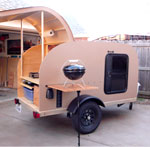Insulation R Values
20 posts
• Page 1 of 2 • 1, 2
Insulation R Values
I did a search here but came up with more threads that weren't specific and sadly I don't have the time to read through the hundreds of build threads.
My question relates to the various foam board insulation R values. The blue Dow would be my preferred since it has the highest R rating (6.5/inch), the pink Corning next at 5/inch, and the white R-Tech Insulfoam that appears to come in at about 4.5/inch. The blue Dow, which I would prefer for its higher R rating is not available to me locally. Lowe's on-line lists it but shows it as "Not available" at any store local to me. The Pink Corning is available at my Home Depot as is the white Insulfoam R-Tech, the latter being cheaper by about $4 per 4'x8' sheet. I am not that cost concerned but is it worth the extra $ for an added value of approximately .5 on the R scale?
Needless to say I would much prefer the blue Dow but it doesn't seem to be available locally (I did email Lowe's to ask what's up with it not being available locally when it is shown on their web site but hold out little hope of getting anything other than an "Sorry" reply).
I live in southwest Idaho, which can go from -20f to +110f over the course of the year so I am interested in the best insulation I can get in the space I have (1"). Is a value of 4.5 to 6.5 significant, I suspect it is but I don't know just how significant?
Thank you for any help you can provide.
Don
My question relates to the various foam board insulation R values. The blue Dow would be my preferred since it has the highest R rating (6.5/inch), the pink Corning next at 5/inch, and the white R-Tech Insulfoam that appears to come in at about 4.5/inch. The blue Dow, which I would prefer for its higher R rating is not available to me locally. Lowe's on-line lists it but shows it as "Not available" at any store local to me. The Pink Corning is available at my Home Depot as is the white Insulfoam R-Tech, the latter being cheaper by about $4 per 4'x8' sheet. I am not that cost concerned but is it worth the extra $ for an added value of approximately .5 on the R scale?
Needless to say I would much prefer the blue Dow but it doesn't seem to be available locally (I did email Lowe's to ask what's up with it not being available locally when it is shown on their web site but hold out little hope of getting anything other than an "Sorry" reply).
I live in southwest Idaho, which can go from -20f to +110f over the course of the year so I am interested in the best insulation I can get in the space I have (1"). Is a value of 4.5 to 6.5 significant, I suspect it is but I don't know just how significant?
Thank you for any help you can provide.
Don
On the road to Shambala...
http://www.youtube.com/watch?v=PDpVS7D9AJs
http://www.youtube.com/watch?v=PDpVS7D9AJs
-

d30gaijin - Titanium Donating Member
- Posts: 594
- Images: 139
- Joined: Sat Jun 12, 2010 9:27 pm
- Location: Boise, Idaho
One thing to remember, as you choose insulation, is that you are insulating a very small space with a teardrop camper. It isn't like insulating a house. You don't need a whole lot of insulation to stay warm in a 5 by 8 sleeping compartment. Two people inside that size space generate a lot of heat.
If you plan to camp in -20 degree temperatures, then you will need some insulation, but perhaps not as much as you think. I have camped in temperatures cold enough to snow with no insulation at all, and my little heater kept me very comfortable. If I had not had electricity, a down comforter would have been more than adequate to sleep comfortably.
And, as far as summer heat goes, I live in Texas, and my $89 air conditioner is more than enough, even with no insulation.
So, I wouldn't get obsessed with R-values. I really don't think you need as much insulation as you may think you do.
CD
If you plan to camp in -20 degree temperatures, then you will need some insulation, but perhaps not as much as you think. I have camped in temperatures cold enough to snow with no insulation at all, and my little heater kept me very comfortable. If I had not had electricity, a down comforter would have been more than adequate to sleep comfortably.
And, as far as summer heat goes, I live in Texas, and my $89 air conditioner is more than enough, even with no insulation.
So, I wouldn't get obsessed with R-values. I really don't think you need as much insulation as you may think you do.
CD
-

caseydog - Platinum Donating Member
- Posts: 12420
- Images: 515
- Joined: Tue Jan 16, 2007 1:44 pm
 I am converting a 6'x10' cargo; would your response apply equally to a slightly larger living area?
I am converting a 6'x10' cargo; would your response apply equally to a slightly larger living area?


 Of course once installed we'll never see it again but it makes me feel better knowing I have blue stuff between my walls rather than pink stuff.
Of course once installed we'll never see it again but it makes me feel better knowing I have blue stuff between my walls rather than pink stuff. 